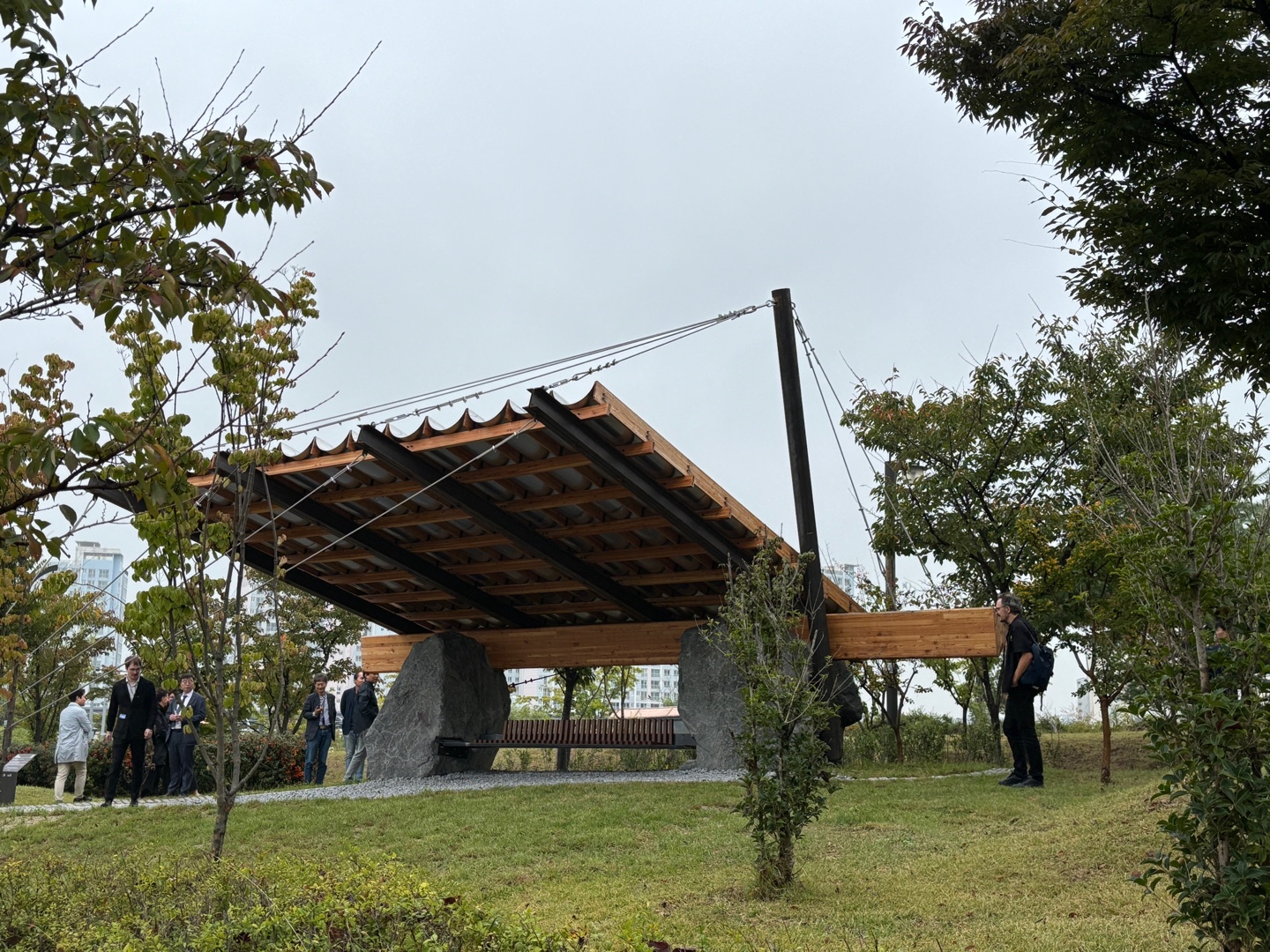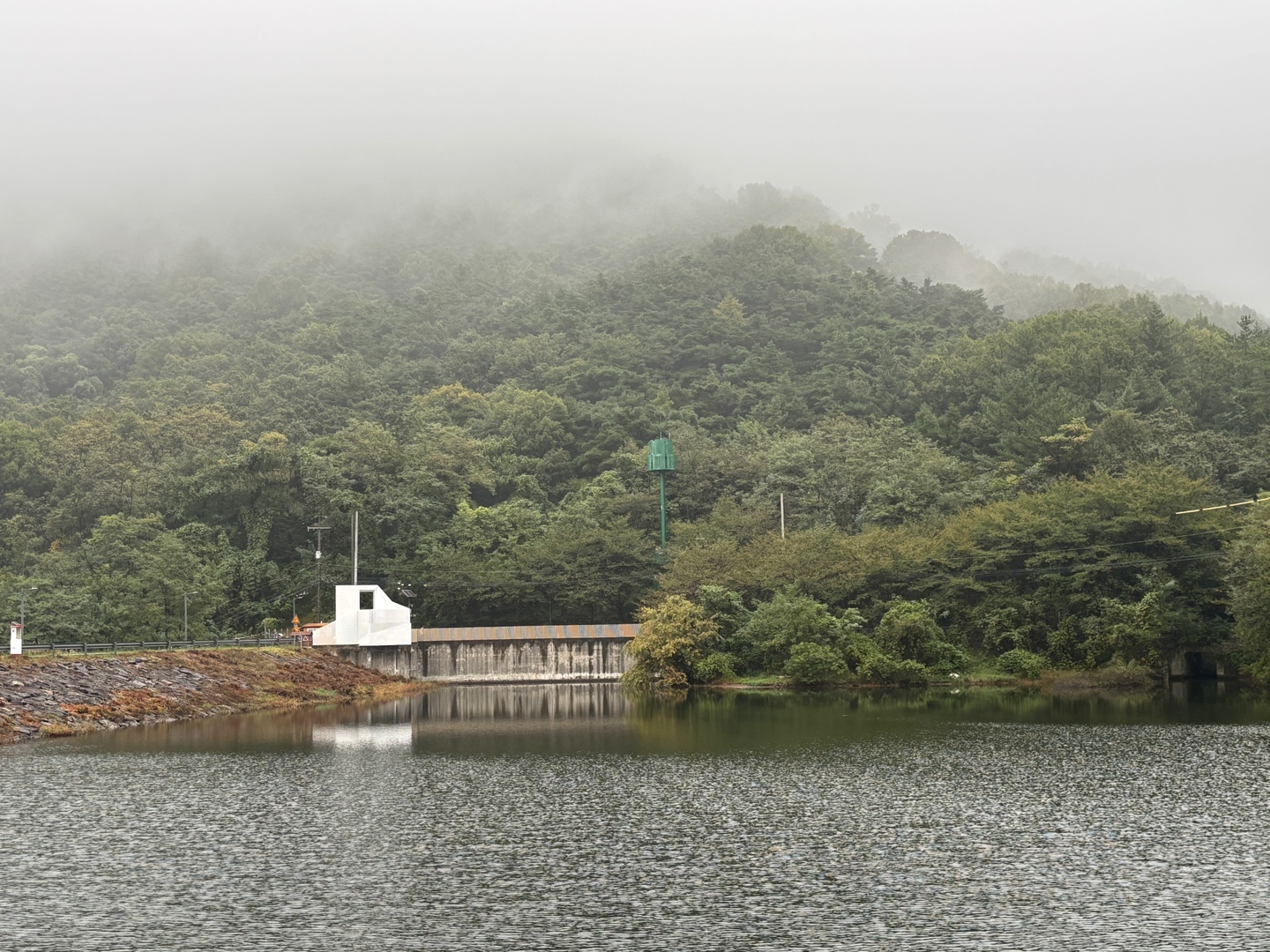SPACE November 2024 (No. 684)

Installation view of SUPRA ©Kim Bokyoung

Installation view of Sosobyeol ©Kim Bokyoung
On Oct. 15, the opening ceremony of the 2024 Suseong International Biennale was held. This biennale showcases a collection of architectral, landscaping, and pavilion projects recently planned by Suseong-gu office, Daegu-si. The event was curated by Shin Changhoon (co-principal, Unsangdong Architects), who has been the chief architect of Suseong-gu since 2020. In the fields of architecture and landscape design, Choon Choi (professor, Seoul National University) and Kim Youngmin (professor, University of Seoul) jointly served as artistic directors. The Suseong International Biennale is not just another international event that invites renowned foreign architects to create eye- catching landmarks. Instead, it aims to foster the development of local architectural culture by providing opportunities for the works of both international and local architects to be exhibited side by side. Unlike other biennales that focus on ‘exhibitions’, where various works are displayed and then disperse, the Suseong International Biennale stresses the creation of actual architectural, landscaping, and pavilion projects within the district. This approach aims to enhance the urban environment in a tangible way. With each biennale, the goal is to accrue the works of distinguished architects and landscape architects from around the world, gradually shaping a distinctive urban landscape. In this context, the theme of the inaugural biennale has been set as ‘Relational Field’. The term ‘field’ signals a concrete site of practice. At the same time, this field serves as a broad platform that connects various elements such as landscaping and architecture, the present and the future, the artificial and the wild, nature and technology. As part of the Suseong International Biennale, Suseong-gu office is currently undertaking several projects, including the construction of four Suseong Pavilions (The pavilion of Daedukji, The pavilion of Daejinji, The pavilion of Naegwanji, and The pavilion of Maehocheon), Suseong Lake Floating Stage and Suseong Lake Bridge (covered in SPACE No. 678), The Trail for Thought Healing Center (competition won by Laurent Pereira Architects + Yangji and Co.), Geumho River Ecological Observatory (competition won by ATELIER KHJ), and Mangwolji Ecological Garden & Ecological Education Center (competition won by The Garden + SMART ARCHITECTURE). Of these, three Suseong Pavilions have been completed and are open to the public. The pavilions of Naegwanji and Maehocheon are works by local architects. The pavilion of Naegwanji was designed by Dong Wonseo (principal, D.A.). Sosobyeol is located opposite of the ‘Path of Containing Contemplation,’ which was created by remodeling the water intake tower and the bridge in Naegwanji in 2022, in harmony with the natural landscape. At Maehocheon, Ye Jungwoo (principal, CYMA) has created a pavilion titled F.O.R, serving as a rest space. In the neighbourhood park surrounding Daejinji, the Turkish architectural group SO? (co-principals, Sevince Bayrak, Oral Göktaş) has designed the SUPRA pavilion. The name SUPRA is suggestive of its opposite, ‘infra’, highlighting the visibility of water flowing from the sky to the ground, unlike typical urban infrastructures that are hidden underground. Rainwater flows along the roof, which resembles an inverted tile, and collects in naturally carved grooves on the ground before being absorbed into the earth. The indoor exhibition hall at Suseong Artpia Exhibition Hall featured all of the design proposals submitted to the 2024 Suseong International Biennale. Additionally, it showcased the results of the Suseong UAM Global Studio, a collaborative project between Vienna University of Technology and Yeungnam University. The exhibition also included works from the Suseong Global Studio, which saw participation from RMIT, the University of Cincinnati, and Kent State University.





